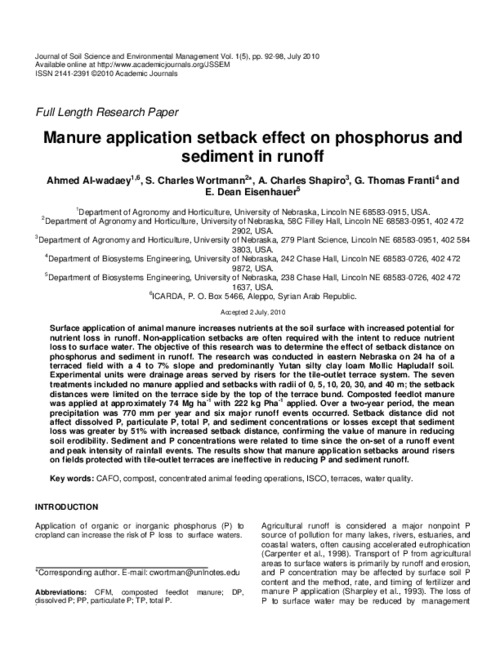Manure application setback effect on phosphorus and sediment in runoff
Abstract
Surface application of animal manure increases nutrients at the soil surface with increased potential for
nutrient loss in runoff. Non-application setbacks are often required with the intent to reduce nutrient
loss to surface water. The objective of this research was to determine the effect of setback distance on
phosphorus and sediment in runoff. The research was conducted in eastern Nebraska on 24 ha of a
terraced field with a 4 to 7% slope and predominantly Yutan silty clay loam Mollic Hapludalf soil.
Experimental units were drainage areas served by risers for the tile-outlet terrace system. The seven
treatments included no manure applied and setbacks with radii of 0, 5, 10, 20, 30, and 40 m; the setback
distances were limited on the terrace side by the top of the terrace bund. Composted feedlot manure
was applied at approximately 74 Mg ha-1 with 222 kg Pha-1 applied. Over a two-year period, the mean
precipitation was 770 mm per year and six major runoff events occurred. Setback distance did not
affect dissolved P, particulate P, total P, and sediment concentrations or losses except that sediment
loss was greater by 51% with increased setback distance, confirming the value of manure in reducing
soil erodibility. Sediment and P concentrations were related to time since the on-set of a runoff event
and peak intensity of rainfall events. The results show that manure application setbacks around risers
on fields protected with tile-outlet terraces are ineffective in reducing P and sediment runoff

